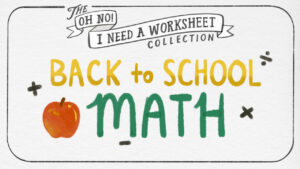Grade 5
-
Geometry
-
Measurement & Data
-
Numbers & Operations: Base Ten
-
Numbers & Operations: Fractions
-
Operations & Algebraic Thinking
CCSS Math Standard: 5.NF.3
Apply and extend previous understandings of multiplication and division to multiply and divide fractions. Interpret a fraction as division of the numerator by the denominator (a/b = a ÷ b). Solve word problems involving division of whole numbers leading to answers in the form of fractions or mixed numbers, e.g., by using visual fraction models or equations to represent the problem. For example, interpret 3/4 as the result of dividing 3 by 4, noting that 3/4 multiplied by 4 equals 3 and that when 3 wholes are shared equally among 4 people each person has a share of size 3/4. If 9 people want to share a 50-pound sack of rice equally by weight, how many pounds of rice should each person get? Between what two whole numbers does your answer lie?


